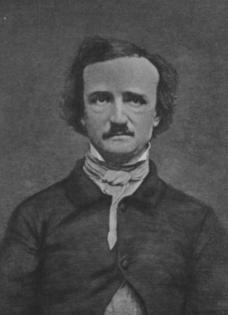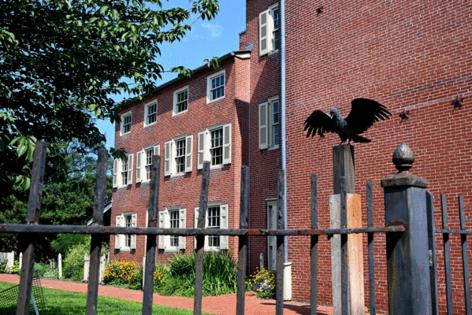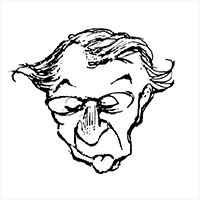Trump administration will review panels on Edgar Allan Poe's opposition to abolitionist movement at Philly site
Published in News & Features
PHILADELPHIA — Two panels that reference Edgar Allan Poe’s opposition to abolitionism were flagged for President Donald Trump’s administration’s review by National Park Service staff at the historic site in Philadelphia where the influential author once lived.
The panels titled “Philadelphia Through Poe’s Eyes” and “Poe’s Literary Criticism” are among those that could be removed if the Trump administration determines the exhibits “inappropriately disparage Americans past or living,” as outlined in the president’s executive order, according to internal comments, obtained and reviewed by The Inquirer, from park staff.
Interior Secretary Doug Burgum issued a directive in May carrying out Trump’s order and, in June, the National Park Service told all NPS units to carry out the evaluation by July 18. At Independence National Historical Park, more than a dozen displays about slavery were flagged by park staff for the administration’s review.
A portion of “Philadelphia Through Poe’s Eyes” subtitled “Chaotic Democracy” was flagged because the “content comments on violence committed against immigrants, Catholics, and African Americans, in Philadelphia, especially after the right to vote was stripped from the latter in PA in 1838,” according to the park staff comment.
“It states that Poe, having been raised in Richmond, VA, ‘a world dependent on slave labor,’ was not an abolitionist,” the comment continues.
Poe lived in Philadelphia from 1838 to 1844, bookended by violent events that targeted abolitionists, Black Americans, and immigrants.
In the year Poe arrived to the city, prominent abolitionists and Black Americans were violently targeted by mobs outside Pennsylvania Hall, which was eventually burned down by the attackers. In the days following, the lives and homes of abolitionists like Lucretia Mott and Samuel Webb were in jeopardy and mobs tried demolishing crucial institutions like an orphanage for Black children and the Mother Bethel African Methodist Episcopal church.
For three days in the summer of 1844, the “Bible Riots” occurred where American-born Protestants violently targeted the growing population of Irish Catholic immigrants in the city.
In addition to flagging the information about these historical acts of violence, park staff also flagged a section a panel on “Poe’s Literary Criticism” that deals with his thoughts on the poet James Russell Lowell: “Content demonstrates Poe’s criticism of Lowell as an abolitionist.”
Lowell was a 19th-century poet and a staunch abolitionist who published work in many antislavery newspapers, including the Pennsylvania Freeman and the Anti-Slavery Standard, according to the Academy of American Poets.
The context of these exhibits at the site is unclear and the specific panel text is unavailable to The Inquirer because the building is under construction.
Spokespeople for the Interior or NPS did not immediately respond to a request for comment.
The Edgar Allan Poe National Historic Site features the original unfurnished version of “The Raven” writer’s home and other related exhibits. Poe lived in Philadelphia for six years and the NPS describes that time as “his happiest and most productive.”
During his time in the city, Poe published numerous poems, essays and works of fiction, including “The Murders in the Rue Morgue,” and “The Masque of the Red Death,” stories that had major influence respectively on the detective and gothic genres.
He spent his last year to 18 months living in Philadelphia at the North Seventh Street House, which is where the historic site stands.
Poe never personally enslaved anyone, according to the Poe Museum, but he was raised in a household and family in Richmond that profited from the institution of slavery.
For example, “Poe grew up in a household where people enslaved by (Foster Father John) Allan lived and labored. He visited the plantation inherited by his foster father where over a hundred men, women, and children were inherited, bought, and sold,” according to the museum.
The Trump administration will likely also be considering if materials about slavery flagged at Independence Park “disparage” other American figures like President George Washington or Benjamin Franklin.
Six exhibits at the President’s House Site were flagged for review all related to slavery and the nine people Washington enslaved there. The stories of the nine people enslaved by the first president became a focal point of the site upon its opening 15 years ago after efforts from a Black-led activism group, Avenging the Ancestors Coalition.
Other flagged items were at the Benjamin Franklin Museum, the Second Bank, Independence Hall, an outdoor wayside exhibit, and a proposed park exhibit.
This impending review by the Trump administration has been a rallying call for preservationists, historians, and activists to push for the protection of these sites. Two Philadelphians have been developing ways to archive exhibits at the park, and activists gathered at the President’s House this past weekend to advocate for its preservation.
©2025 The Philadelphia Inquirer. Visit inquirer.com. Distributed by Tribune Content Agency, LLC.










Comments